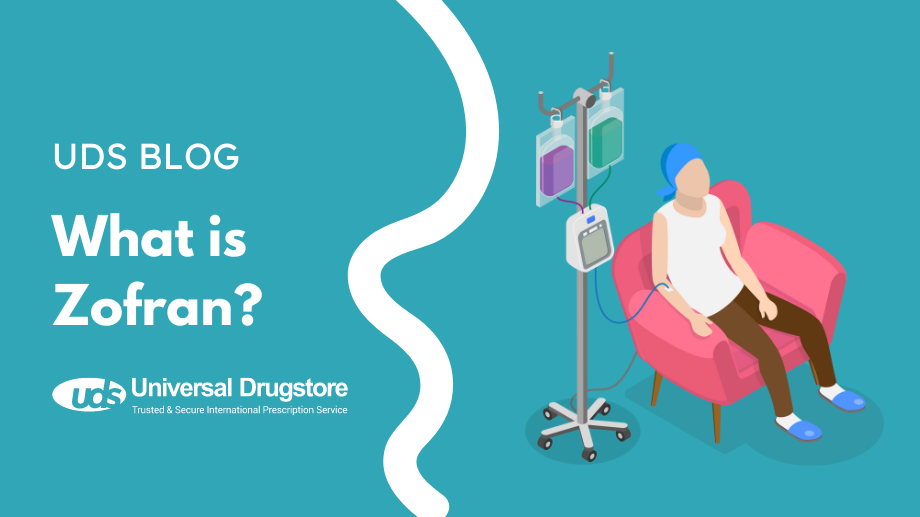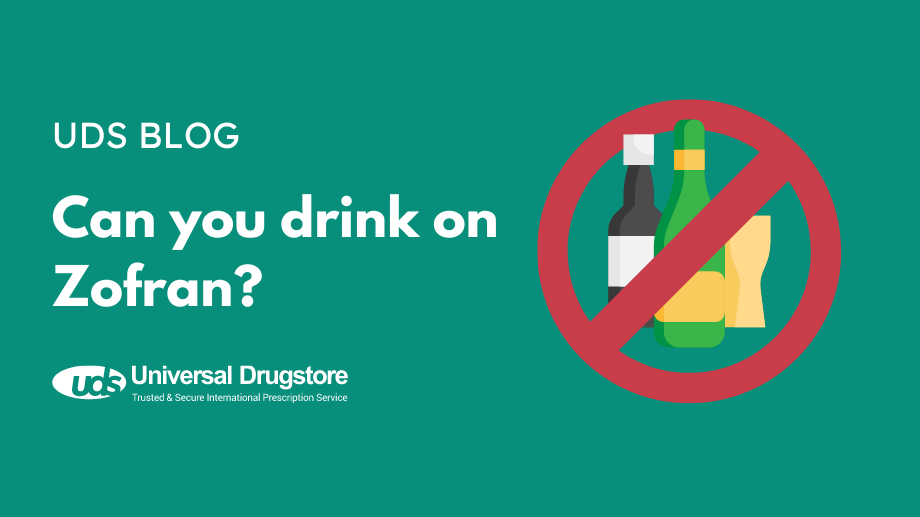What is Zofran?

Zofran (ondansetron) is a brand‑name medication used to treat or prevent nausea and vomiting caused by chemotherapy, radiation therapy, or surgery. It belongs to the class of medications called 5‑HT3 receptor antagonists. Zofran works by blocking the action of serotonin, a natural substance that may cause nausea and vomiting. It is taken by mouth, typically every 8 to 12 hours, and comes in oral tablets, orally disintegrating tablets, and oral solutions. It can also be given as an injection by a healthcare provider. The most common side effects include headache, drowsiness, and constipation or diarrhea.
Keep reading as we go into more detail about how Zofran works, its side effects, and other important information you should know before taking this medication.
What is Zofran used for?
Zofran is FDA‑approved for:
- Prevention of nausea and vomiting due to cancer medications (chemotherapy) or radiation treatment
- Postoperative nausea and vomiting
It can be used in patients as young as 4 years old.
What exactly does Zofran do?
Zofran is a 5‑HT3 receptor antagonist. It blocks serotonin receptors in the part of the brain that triggers nausea and vomiting, helping manage these symptoms in cancer and surgical patients.
What are the side effects of Zofran?
The most common side effects seen in clinical trials include:
- Headache
- Dizziness or lightheadedness
- Drowsiness
- Constipation
- Diarrhea
- Tiredness
Some people may experience serious side effects requiring immediate medical attention:
- Serious allergic reaction (rash, hives, swelling of face/tongue/lips, trouble breathing, blurred or temporary vision loss, increased risk of heart attack)
- Serotonin syndrome (increased heart rate, sweating, muscle stiffness or spasms, fever, confusion) — risk rises if taken with other serotonergic drugs
- Abnormal heart rhythm or irregular heartbeat (QT prolongation), especially with IV ondansetron or low electrolytes — seek care for chest pain, change in heart rate, shortness of breath, or severe dizziness
- Masking of a stomach blockage — inform your provider if you aren’t having bowel movements or passing gas
These are not all possible side effects. Always seek medical advice for concerns and report adverse effects to the FDA at www.fda.gov/medwatch or 1-800-FDA-1088.
Are there drug interactions with Zofran?
Zofran may change how other drugs work or increase side effects. Tell your healthcare professional about anything you are taking, including:
- Serotonergic drugs (SSRIs, SNRIs, MAO inhibitors)
- Drugs affecting CYP450 enzymes (carbamazepine, phenytoin)
- Alfentanil, atracurium
- Tramadol
- Chemotherapy agents
- Apomorphine
- Fentanyl
Who should not take Zofran?
Do not take Zofran if you are allergic to ondansetron, its inactive ingredients, or similar medicines (dolasetron, granisetron, palonosetron). Avoid Zofran if you are also taking apomorphine, as this combination can cause severe low blood pressure and loss of consciousness.
What other warnings and precautions are there?
Before starting Zofran, discuss any existing health conditions with your provider, including:
- A history or family history of long QT syndrome or QT prolongation
- Congestive heart failure or slow heartbeats
- Phenylketonuria (ODTs contain phenylalanine from aspartame)
- Liver disease
- Digestive tract blockage (intestines or stomach)
Is Zofran safe during pregnancy or breastfeeding?
Talk to your healthcare provider if you are pregnant or planning pregnancy. Zofran is sometimes used off‑label in pregnancy, with mixed study results. Discuss risks and benefits with your provider.
If breastfeeding, consult your provider. Animal studies suggest Zofran is found in breast milk; monitor the infant for sedation or feeding difficulties if used.
How should you store Zofran?
Zofran Tablets and ODT: store at room temperature below 86 °F (30 °C).
Zofran Oral Solution: store upright between 59 °F and 86 °F (15 °C–30 °C).
Do not refrigerate. Keep out of reach of children.
Related Medications
- Kytril (granisetron)
- Aloxi (palonosetron)
- Emend (aprepitant)
- Reglan (metoclopramide)
- Phenergan (promethazine)
Sources
- Ondansetron (Rx). Medscape. Accessed Aug. 12, 2024.
- Zofran Tablets, Oral Solution and Injection (Product Monograph). Novartis. Accessed Aug. 12, 2024.
- Zofran. Prescriber’s Digital Reference. Accessed Aug. 12, 2024.
- Ondansetron hydrochloride – ondansetron solution. DailyMed. Accessed Aug. 12, 2024.
- Ondansetron hydrochloride tablet, film coated; orally disintegrating. DailyMed. Accessed Aug. 12, 2024.
- Zofran – ondansetron hydrochloride tablet, film coated. DailyMed. Accessed Aug. 12, 2024.




